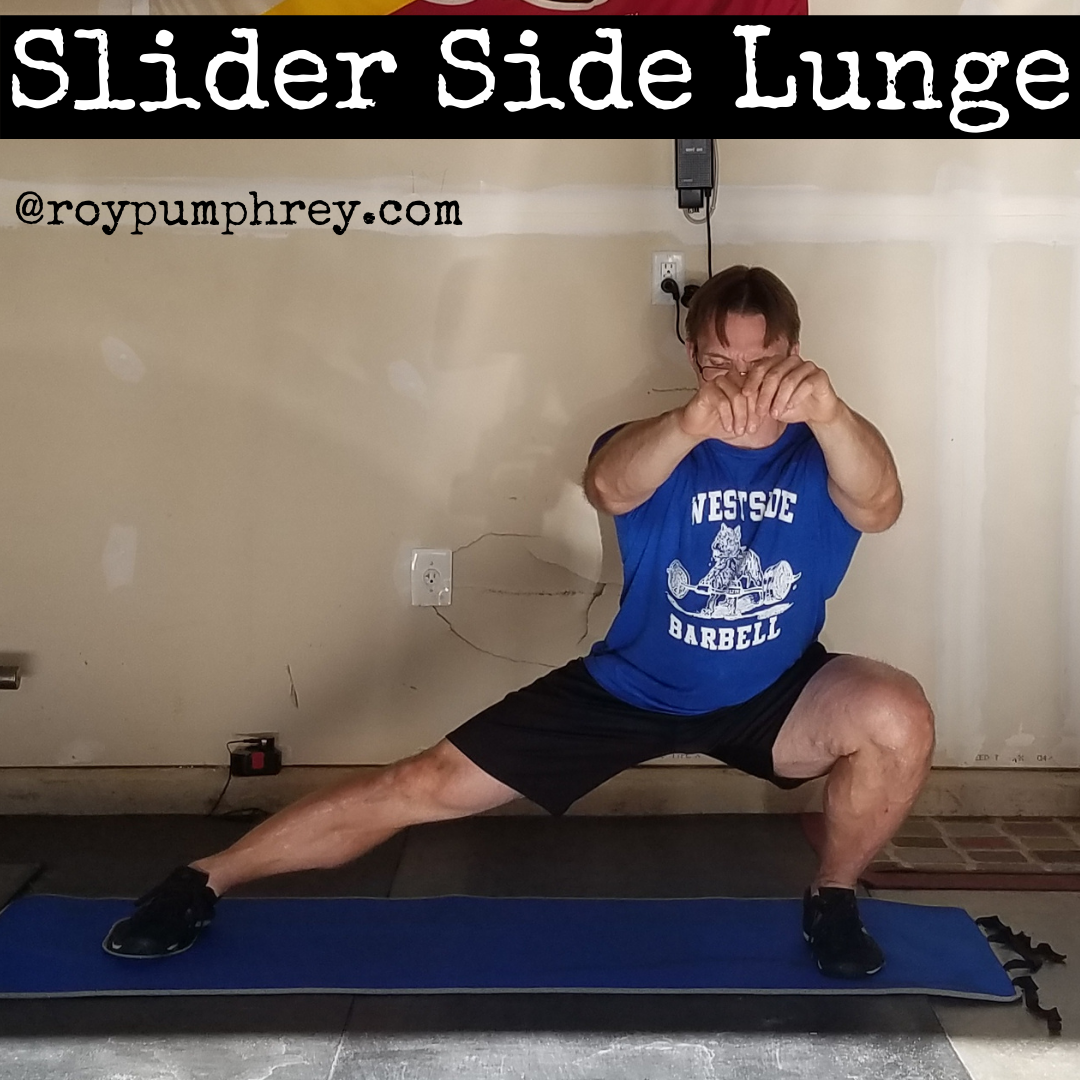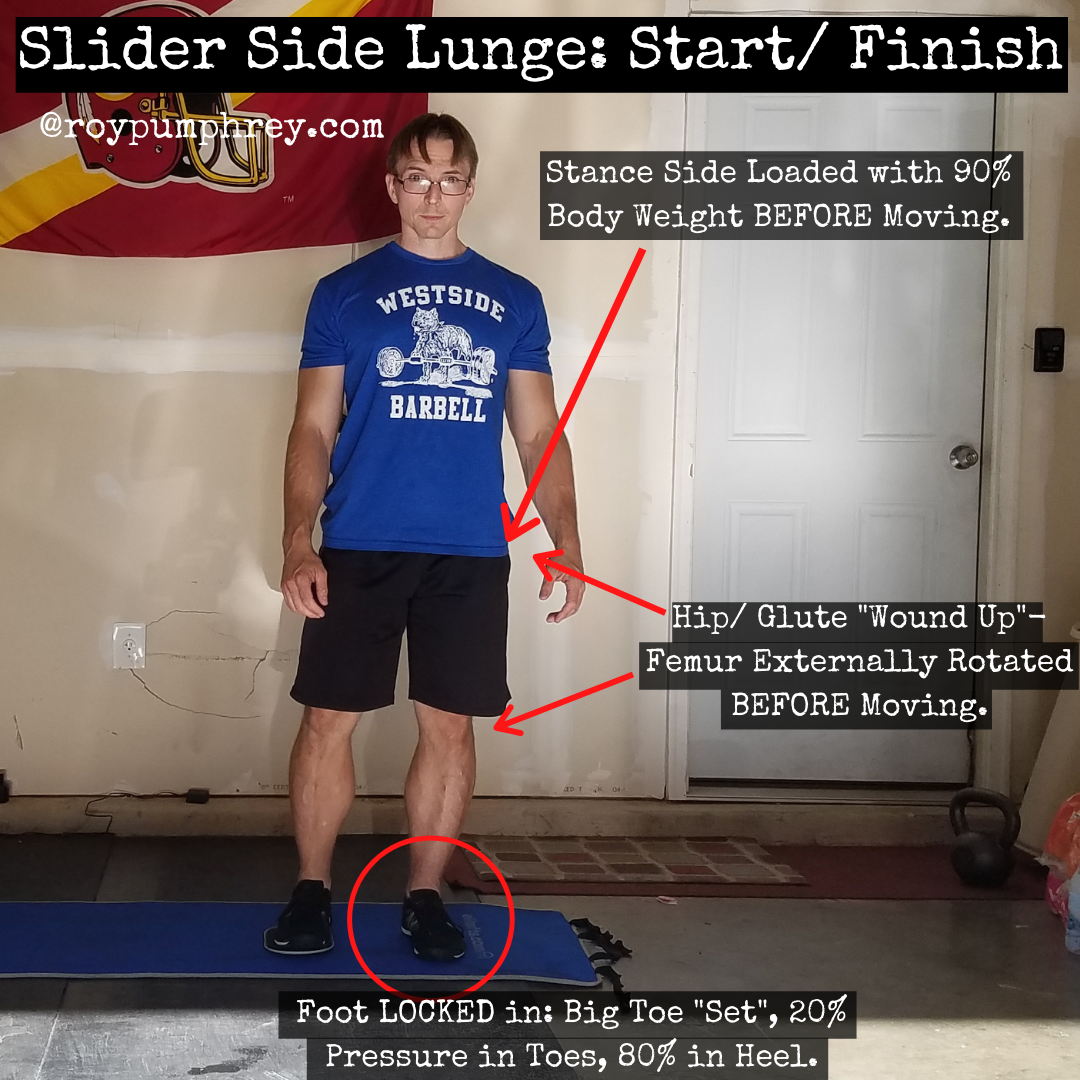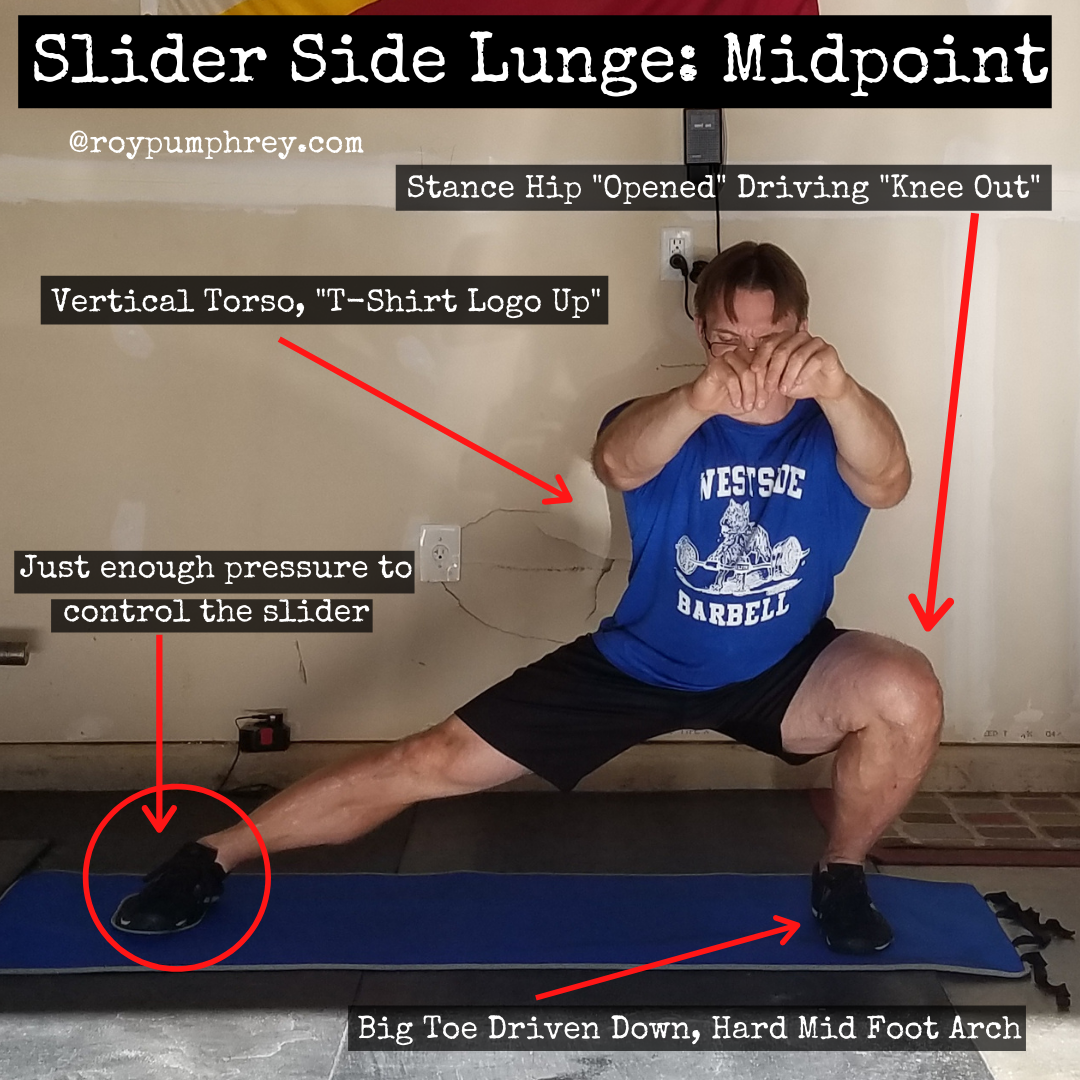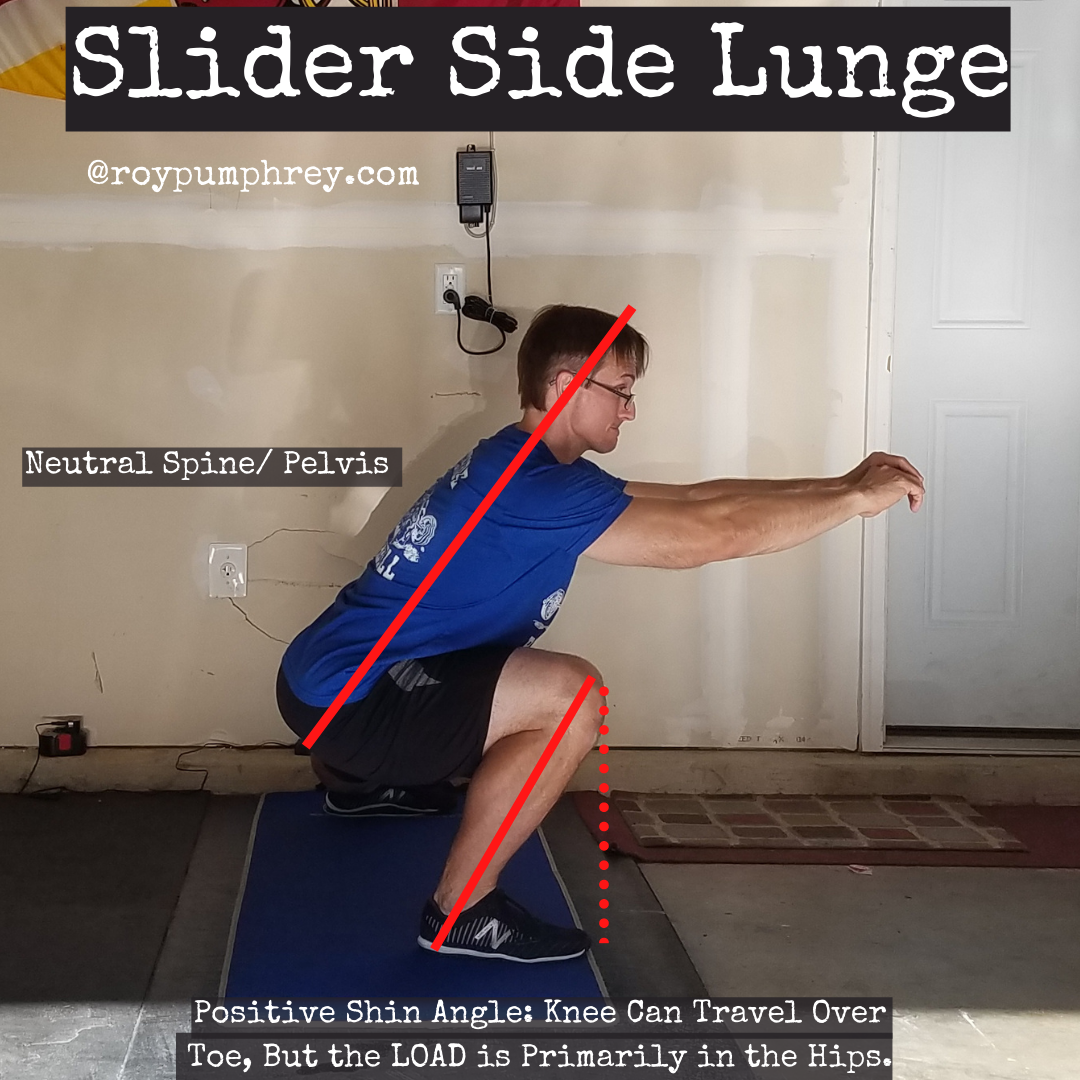
Slider Side Lunge
Most of what we do in the weight room occurs in the astral plane sagittal plane.
These are forward/ back ward movements like squats, lunges, bench press, pullups etc.
This makes sense.
Much of life occurs in this plane too.
Most, not all.
A LOT of life occurs in the other planes too.
Transverse and Frontal
and the truth of truths is that MOST things actually occur in a combination of ALL these planes of movement.
Muscles coordinate actions across joints to control the movement creating the desired outcome.
Well, anyone who has done literally ANYTHING even mildly athletic knows….
NOT Allowing Movement is Just As Important as Creating Movement
For Example: The Lunge.
Fundamentally lunges take place in the sagittal plane, forward- backward.
But, but, but…
Think about the femur in a lunge.
It should remain controlled, moving IN the sagittal plane.
Not moving much in the frontal plane.
And the pelvis?
We’re not looking for excess pelvis rotation, or transverse plane movement, during the typical lunge.
So, YES, a lunge is a “Sagittal Plane Exercise”, but you better have frontal and transverse plane control to do it well.
Same thing can be said for something like the Pallof Press.
I would argue, and think most would agree, that this is primarily a Transverse Plane exercise, where the goal is to NOT MOVE.
But what if you don’t have the sagittal plane part of the movement and cant press the weight out in front of you?
That’s called standing.
Trust me, simply standing is not the best core TRUNK training modality.
Ever Watch The NFL Combine?
If you do, you realize something.
These guys are genetic freaks.
Then you realize the 40 yard dash isn’t what happens on the field very often.
I mean, its cool to watch, but doesn’t always translate to playing a down, or success, in an actual NFL game.
“Perhaps a more plausible explanation for the lack of correlation between combine performance and NFL performance is that combine exercises simply measure athletic skill and not actual football-playing ability. The difference between skill and ability has been cited in human resource management theory. A skill narrowly focuses on a particular task, whereas ability more broadly relates to a multiple set of tasks, or competency (10). For example, a running back may possess raw speed (e.g., running full speed from point A to point B, such as a 40-yard dash) but lack running ability in an actual contest, where he must avoid tacklers by often reacting instantaneously with cuts and jukes and “reading the defense.” Speed does not automatically make an excellent running back, just as command of the English language does not necessarily translate into an effective public speaker. Regardless of a player’s position, football is a complex sport, demanding multiple physical and mental skills for successful performance. For example, one study identified 14 performance dimensions for the quarterback position through a job analysis, including coordination, running speed, vision, ability to learn, football sense, physical reactions, stress tolerance, and being a team player (5).” –The NFL Combine: Does It Predict Performance in the National Football League?
We’ve all seen the guy with the blazing 40, who can’t play a lick.
And the dude who’s “Slow for the NFL” but stays in the league for 10 years because he’s got,
“Suddenness”
or
“Quickness”
To be fair, the 40 is one of the better combine tests, the bench?
That thing is an injury, possibly lower draft status, and loss of millions of dollars, waiting to happen.
For no good reason,
“the bench press was not significantly correlated with any NFL player performance indicator, whereas the 40-yd dash had strong correlations related to 7 different NFL player performance indicators.” – National Football League Scouting Combine Tests Correlated to National Football League Player Performance
40yrd Dash = Sagittal Plane
Field sports and many of the movements of the game we call LIFE take place in MULTIPLE planes of motion.
We should probably include exercises that primarily train in those planes of motion too…
Slider Side Lunge
Checklist:
- Foot in the middle of the slider
- LOAD the stance leg to 90% BEFORE MOVING
- ROOT the foot
- Open the hip (externally rotate the femur) to “wind up” the glute BEFORE you move.
- Hip moves back first, knee can move forward as far as over the toes.
- PULL through the hip and stand TALL finishing on a hard glute at the top.
- Keep the feet, pelvis and shoulders straight from the start, no extra rotation.
Bro Tips:
- Sliders on the proper surface work best…don’t use a towel or a magazine cover, those suck.
- Limit the amount of pelvis drift, how much the pelvis slides to the slider leg side.
- There MUST be some pelvis drift at some point to allow the femur room in the hip joint.
- Think about PULLING the legs together with the stance leg adductor out of the bottom.
BTW: A better name would be Slider Lateral Lunge, but the article was already written and its all the same, just do the damn exercise, its good.





